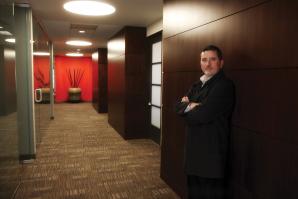Tightening belts may be the overall theme in commercial real estate these days, but a little planning can turn into big savings. Business owners looking for a home and landlords seeking tenant upgrades can trim expenses without shredding the wish list.
The key to containing tenant improvement and construction costs is to recruit a team of experts that will watch your back and your budget. Before signing a lease or mortgage on a property, experts recommend selecting a general contractor and architect to help you choose a space, troubleshoot and bring the project smoothly to fruition.
People often think they will save time and money by waiting to bring on a general contractor, says Rick Osen, president of Sutter Builders in Sacramento. But on the front end, a general contractor and an architect can help identify an appropriate space and get the project off the ground. Without them, time and money can quickly be lost, he says.
With a glut of available commercial space on the market, it’s often more cost effective to repurpose an existing space than to build from scratch, says Amber Vance, director of business development at Wells Construction Inc. in Roseville. The trick is thinking imaginatively while hunting a property with the power, plumbing and air circulation systems that meet a business’ needs.
Before deciding on a property, find out when the building was certified under the Americans with Disabilities Act. Making improvements to bring a building up to current ADA standards can be so costly that another site might be a better bargain, Osen says.
Develop a list of compatible properties by working with a broker that specializes in your type of business, says Mark Alvarez, project manager at Sacramento’s RMW Architecture & Interiors. Then bring the architect and general contractor to evaluate the space and begin planning.
Once inside the space, buyers can expect major costs from cabinetry, specialty lighting, glass and stone. Osen recommends taking features like glass walls into consideration when planning because they will not only cost more, but if they face west, they will need a more powerful HVAC unit to cool the building in the summer heat.
With the help of the architect and general contractor, tenants can create a wish list and a vision for the overall look and feel, Alvarez says. Then, the team can work together to accomplish this objective by value engineering, or substituting quality materials that provide the client a similar look at a lower cost. Pricier items can be directed to the most visible areas of the property.
“To help you save money, we will guide you to locate the expensive items where they will have the most ‘wow’ factor,” Alvarez says. “In the back areas, you can use more generic materials.”
Success and savings depend much on the pre-planning, says Todd DeKreek, president of DeKreek Construction in Folsom. Sticking to a budget and timeline is critical to avoid delays and costly change orders. Vance suggests that her clients set a move-in date and then schedule backward at least six months, setting timelines, milestone goals and check-ins.
“Be conscious of what your expectations are and what your vision is, and plan accordingly,” Vance says. “It’s all about laying it out, designing and space-planning efficiently while sticking within your means.”
Recommended For You

Room For Improvement
Tenant improvement projects stagnate despite office shuffling
The Capital Region’s tenant improvement market is trudging along, mired by a deep air of malaise following years of construction decline.

Rent the American Dream
Sacramento millennials aren't interested in mortgages
Brian Collins is a 26-year-old director of accounts at Sacramento-based mobile applications marketing firm Appency. He makes what he calls “decent money,” is putting lots of it into a 401(k) and has an eye on his financial future. And, like most people his age, he’s decided that buying a house is not part of the plan.


